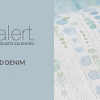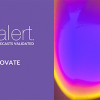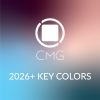Let’s Talk Trends – Multi-Family Housing
by CMG Member, Ariel Levy-Mayer, 3A Composites USA
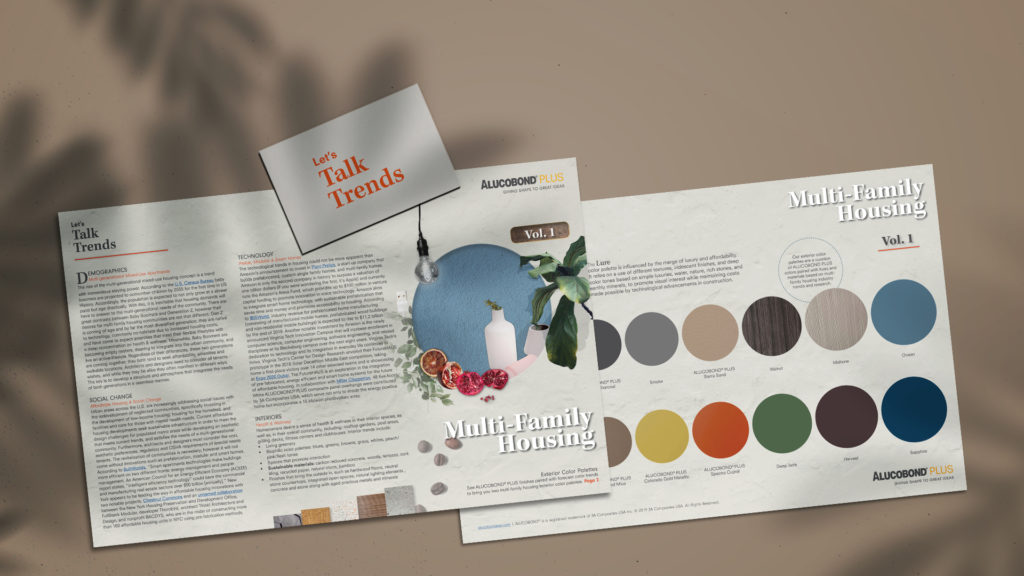
Let’s Talk Trends is a bimonthly (i.e. every other month) publication discussing trends in the Architecture & Design industry. In growing our resources for the architectural community, ALUCOBOND® is proud to publish Volume 1, Multi-Family Housing which focuses on demographic, social, and technological influences along with interior & exterior materials and colors that drive current trends in the market. We’ve also developed two exterior color palettes based on multi-family housing industry trends for your inspiration.
Download, Let’s Talk Trends: Multi-Family Housing
Demographics
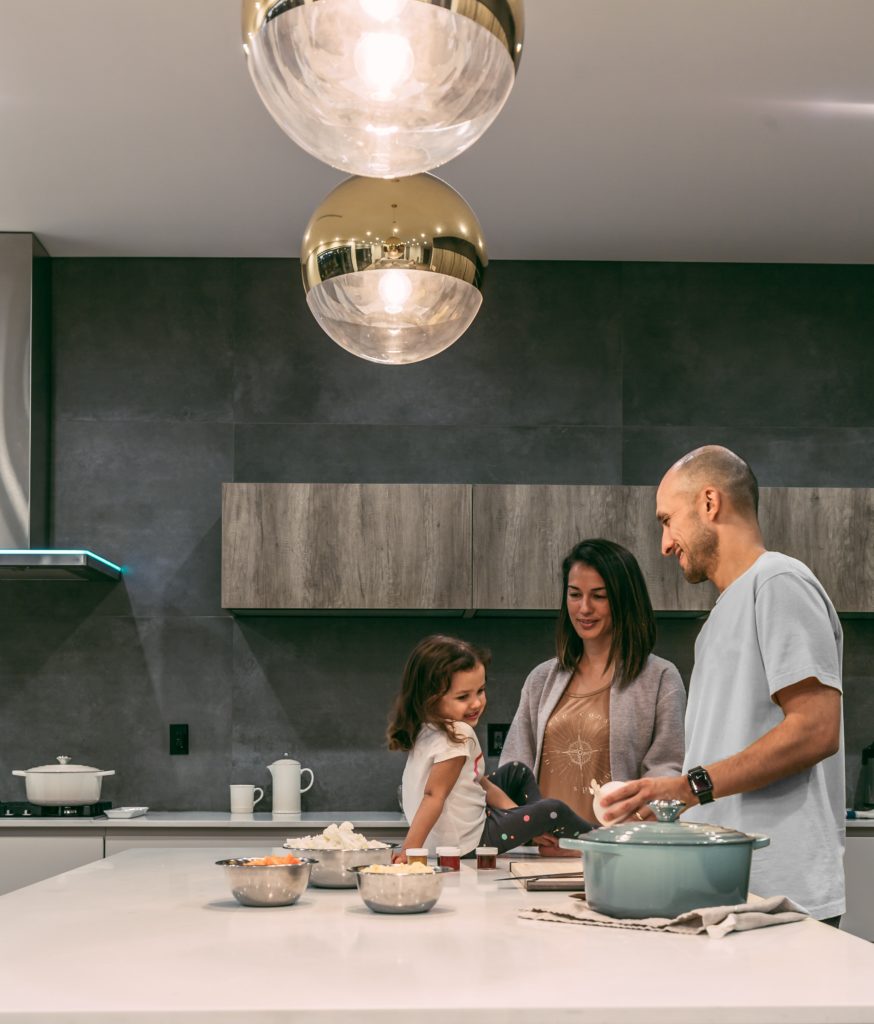
Multi-generational Mixed-Use Apartments
The rise of the multi-generational mixed-use housing concept is a trend with tremendous staying power. According to the U.S. Census Bureau baby boomers are projected to outnumber children by 2035 for the first time in US History. Accordingly, the population is expected to not only grow at a slower pace but age drastically. With this, it is inevitable that housing demands will have to answer to the multi-generational needs of the community. There are great contrasts between Baby Boomers and Generation Z, however their desires for multi-family housing communities are not that different. Gen Z is coming of age and by far the most diversified generation; they are native to technology, commonly co-habitate due to increased housing costs, and have come to expect amenities that meet their flexible lifestyles with a deep concentration on health & wellness.
Meanwhile, Baby Boomers are becoming empty nesters, desiring to integrate into the urban community, and live an active lifestyle. Regardless of their differences, these two generations are coming together; they both tend to seek affordability, amenities and walkable locations. Architects and designers need to consider all tenants wishes, and while they may be alike they often manifest in different ways. The key is to develop a structure and atmosphere that integrates the needs of both generations in a seamless manner.Social Change
Affordable Housing & Social Change
Urban areas across the U.S. are increasingly addressing social issues with the redevelopment of neglected communities, specifically investing in the development of low-income housing, housing for the homeless, and facilities and care for those with mental health needs. Current affordable housing developments seek sustainable infrastructure in order to meet the design challenges for populated metro areas while developing an aesthetic that meets current trends, and satisfies the needs of a multi-generational community. Furthermore, architects and designers must consider the cost, aesthetic preferences, regulatory and OSHA requirements of special needs tenants. The revitalization of communities is necessary; however it will not come without innovations such as prefabrication, modular and smart homes. According to BuiltWorlds, “Smart apartments technologies make buildings more efficient on two different fronts: energy management and people management. An American Council for an Energy-Efficient Economy (ACEEE) report states, “intelligent efficiency technology” could save the commercial and manufacturing real estate sectors over $50 billion [annually].” New York appears to be leading the way in affordable housing innovations with two notable projects, Chestnut Commons and an unnamed collaboration between the New York Housing Preservation and Development Office, FullStack Modular, developer Thorobird, architect Think! Architecture and Design, and nonprofit BACDYS, who are in the midst of constructing more than 160 affordable housing units in New York City using pre-fabrication methods.
Technology
Prefab, Modular & Smart Homes
The technological trends in housing could not be more apparent than Amazon’s announcement to invest in Plant Prefab, a start-up company that builds prefabricated, custom single family homes, and multi-family homes. Amazon is only the second company in history to surpass a valuation of one trillion dollars (if you were wondering the first, it’s Apple) and currently runs the Amazon’s Alexa Fund, which provides up to $100 million in venture capital funding to promote innovation in voice technology. Amazon aims to integrate smart home technology, with sustainable prefabrication that saves time and money and promotes accessibility to housing. According to IBISWorld, industry revenue for prefabricated home manufacturing (consisting of manufactured mobile homes, prefabricated wood buildings and non-residential mobile buildings) is expected to rise to $11.2 billion by the end of 2019.
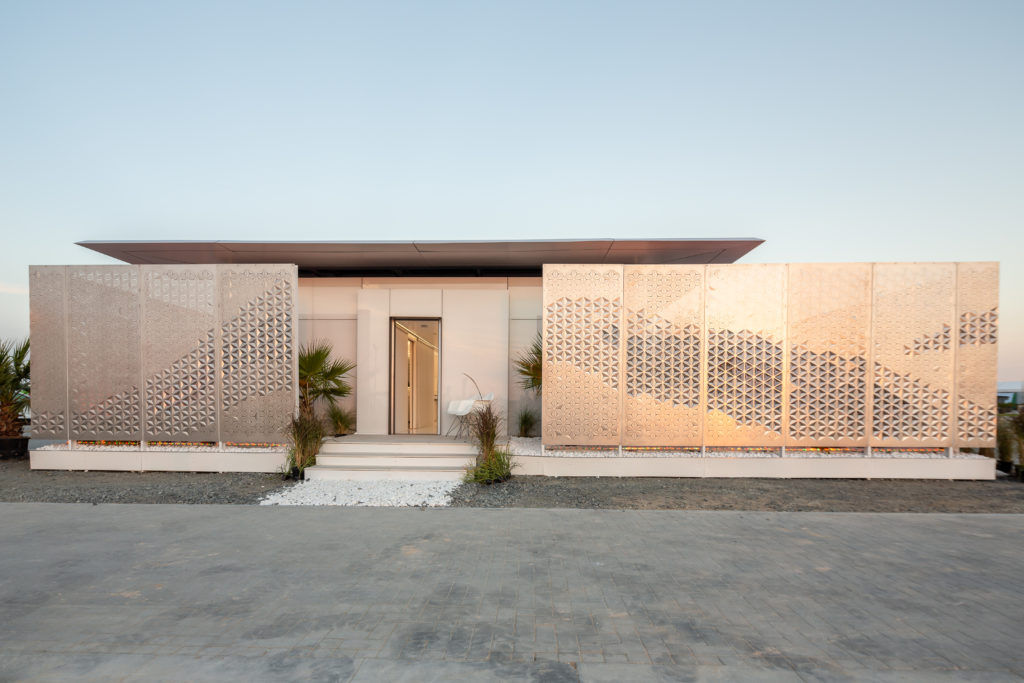
Another notable investment by Amazon is the newly announced Virginia Tech Innovation Campus that will increase enrollment in computer science, computer engineering, software engineering, and related disciplines at its Blacksburg campus over the next eight years. Virginia Tech’s dedication to technology and its integration in everyday life continues to thrive. Virginia Tech’s Center for Design Research unveiled their FutureHAUS prototype in the 2018 Solar Decathlon Middle East competition, taking home a first-place victory over 14 other selected teams and is showcasing at Expo 2020 Dubai. The FutureHAUS is an exploration in the integration of pre-fabricated, energy efficient and smart home systems for the future of affordable housing. In collaboration with MillerClapperton, 48 five-foot Silver Metallic ALUCOBOND® PLUS composite panel overhangs were contributed by 3A Composites USA, which serve not only to shade the energy positive home but incorporates a 15 kilowatt photovoltaic array.
-
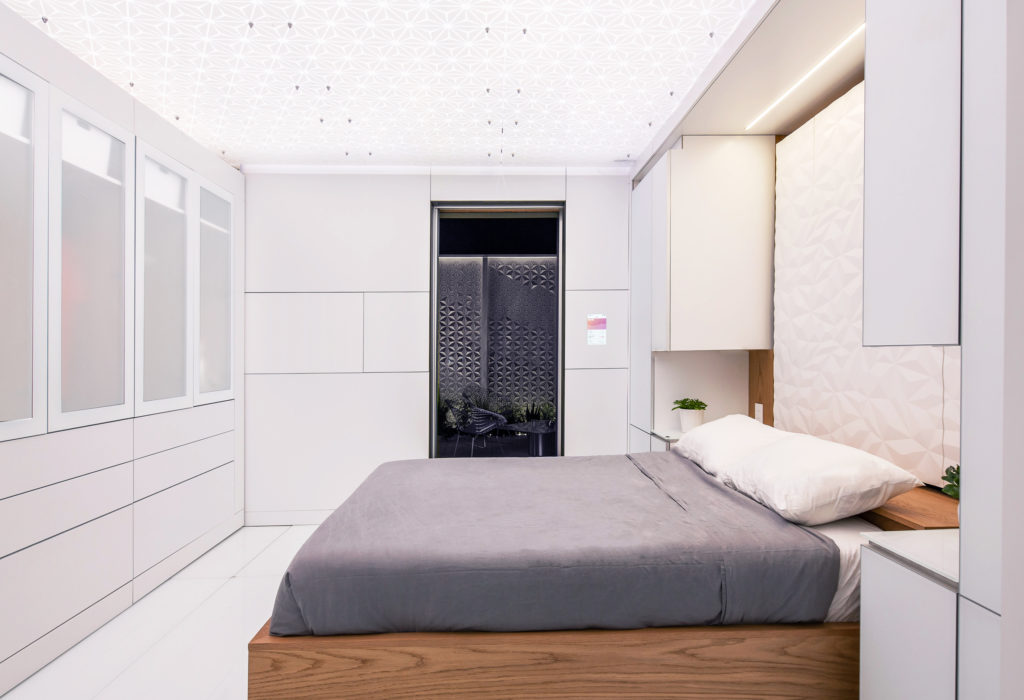
© Thorsen Photography -

© Thorsen Photography
Interiors
Health & Wellness
Homeowners desire a sense of health & wellness in their interior spaces, as well as, in their overall community, including: rooftop gardens, pool areas, grilling decks, fitness centers and clubhouses. Interior trends include:
- Living greenery
- Biophilic color palettes: blues, greens, browns, grays, whites, peach/pink/flesh tones
- Spaces that promote interaction
- Sustainable materials: carbon reduced concrete, woods, terrazzo, cork tiling, recycled paper, natural stone, bamboo
- Finishes that bring the outside in, such as hardwood floors, neutral stone countertops, integrated open spaces, natural lighting elements , concrete and stone along with aged precious metals and mineral
Exterior Color Palettes
Our exterior color palettes are a curation of ALUCOBOND PLUS colors paired with hues and materials based on multi-family housing industry trends and research.
The Comal color palette is influenced by a future that aims to integrate all generations, the digital and physical realms, natural vs. manufactured and traditional vs. new. What once were dichotomies are coming together to form a new community, a new experience, and a new urban landscape.
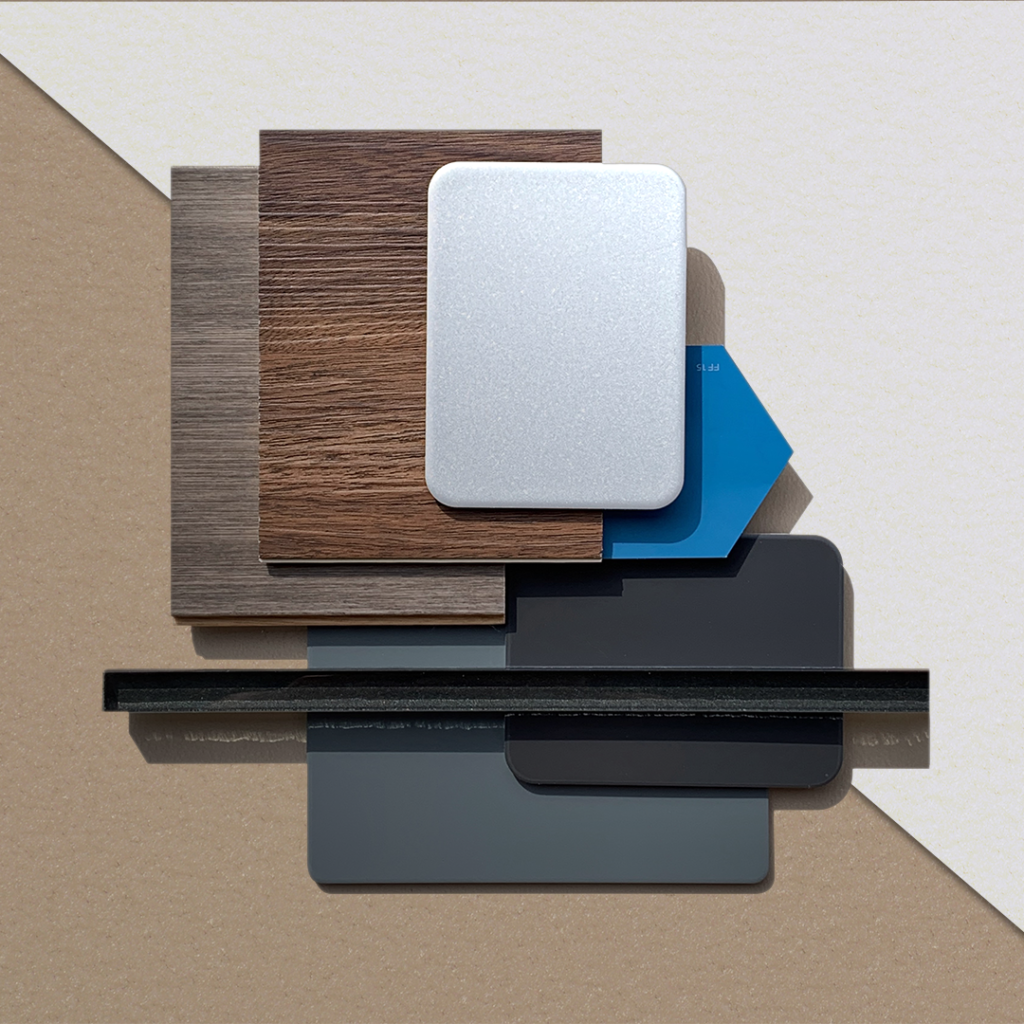
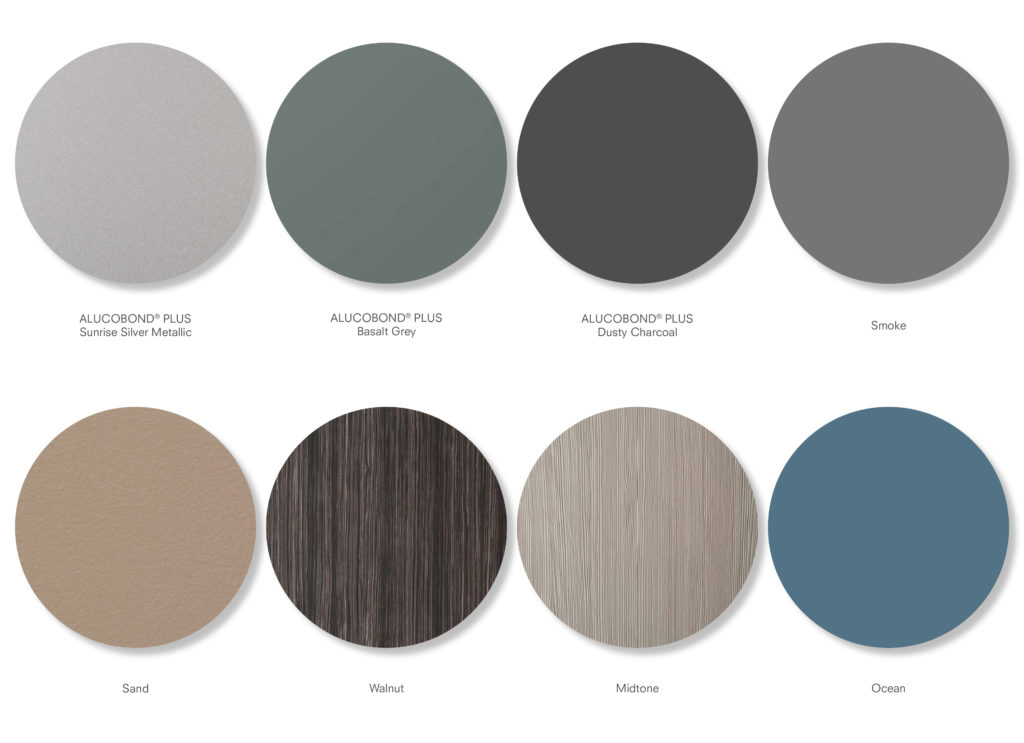
The Lure color palette is influenced by the merge of luxury and affordability. It relies on a use of different textures, iridescent finishes, and deep color tones based on simple luxuries, water, nature, rich stones, and earthly minerals, to promote visual interest while maintaining costs made possible by technological advancements in construction.

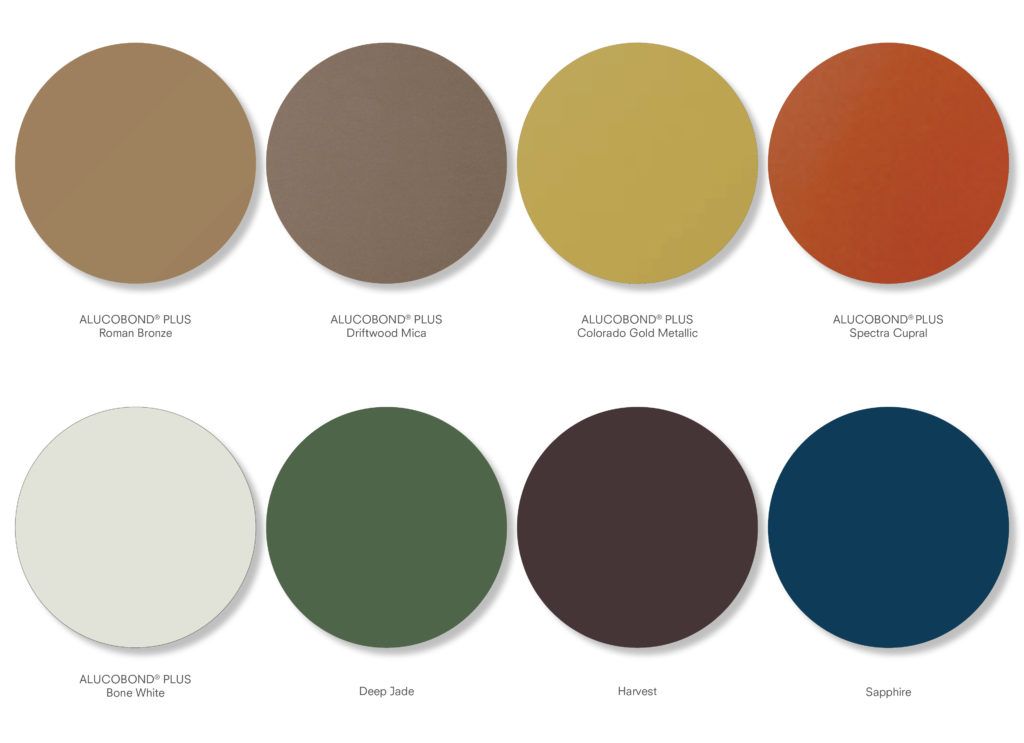
Introduced in 1969, ALUCOBOND® is the original and world’s best-known aluminum composite material. ALUCOBOND® is manufactured in the United States in the Benton, Ky., plant of 3A Composites. The 3A Composites USA headquarters are based in Davidson, N.C. For more information about ALUCOBOND® ACM, call 1-800-626-3365, email info@3ACompositesUSA.com or visit www.alucobondusa.com.
Sign-up to receive e-mail announcements, company news and blog updates from 3A Composites.
ALUCOBOND® is a registered trademark of 3A Composites USA


